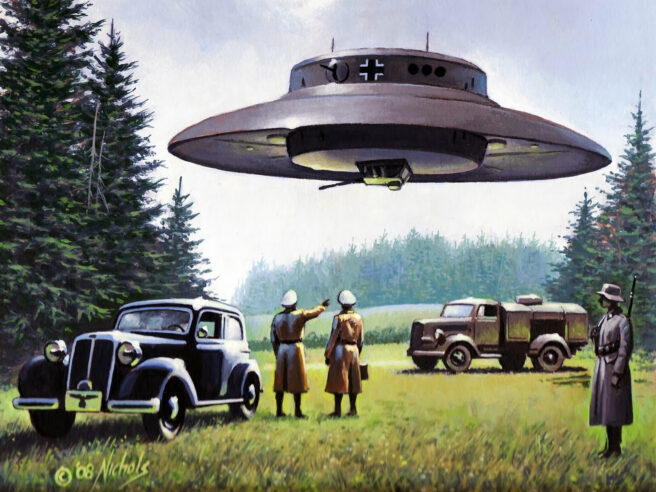
Often, but not always, paired with Nazis in Antarctica and Nazis on the Moon is the Nazi UFO or flying saucer trope.
The trope has a tenuous basis in reality. The Nazis really did develop strange aircraft, including a flying wing, and Allied pilots did claim to spot “foo fighters” over the skies of Germany near the end of the war. This was when Hitler was banking on his “wonder weapons” to snatch victory from the jaws of defeat.
German flying discs, though, were invented after the war by conspiracy theorists and ufologists — and eagerly exploited by dieselpunk creators.
Probably the first mention of Nazi flying saucers was in the Italian newspaper Il Giornale d’Italia in early 1950. Professor Giuseppe Belluzzo, an engineer and economy minister under Benito Mussolini in the 1920s, claimed “types of flying discs” had been “designed and studied” in the Axis countries as early as 1942.
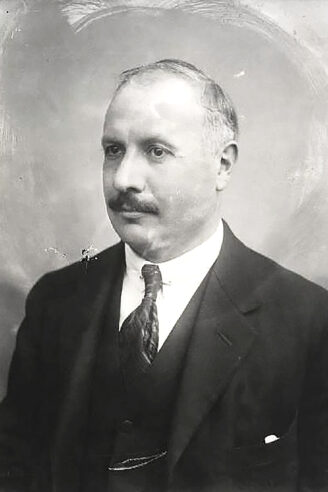

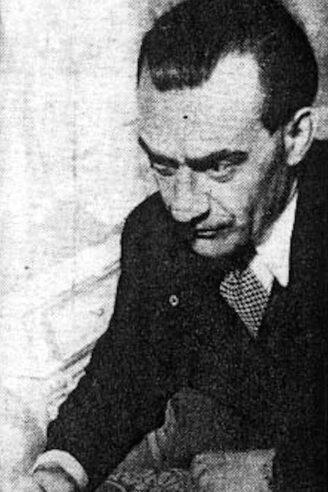
That may have been true. Roy Fedden, a top engineer for the Bristol Aeroplane Company, who led the British Ministry of Aircraft Production’s mission to study German aeronautical research in 1945, reported that Nazi designers had been working on a number of advanced aircraft, some of which approximated flying saucers. Rudolf Schriever told Der Spiegel in 1950 he had been one of those designers. His circular plane would have been 15 meters in diameter and powered by rotating turbine blades. Avro Canada tried to build something like it for the US Air Force, called the Avrocar, in the late 1950s, but it proved unstable.
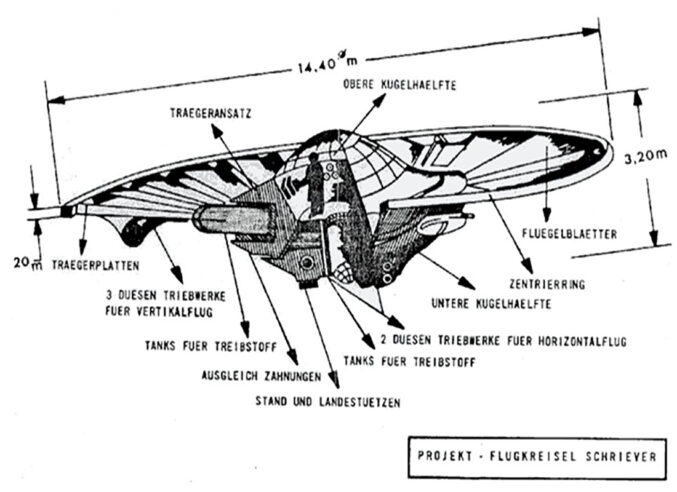
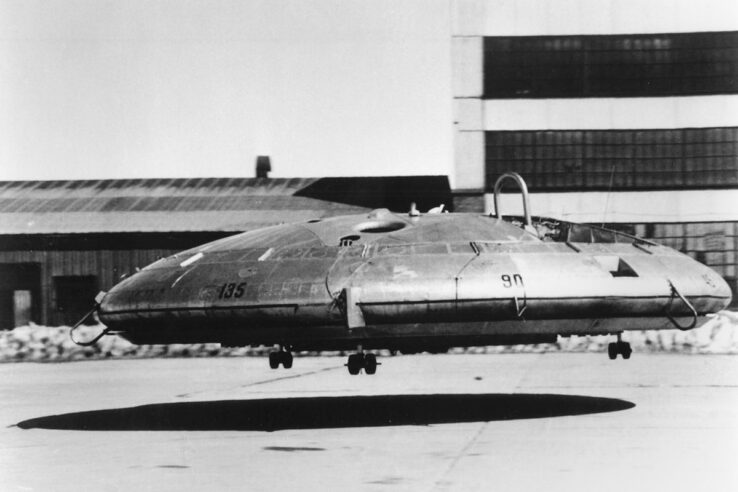
Designing is one thing. Building is quite another, and there is no evidence the Nazis got that far. The people who insist they did tend to be Nazis themselves. Notable proponents of the theory were Holocaust denier Ernst Zündel and Chilean diplomat Miguel Serrano, who published and wrote books claiming Adolf Hitler had escaped to Antarctica and would one day usher in the Fourth Reich with a fleet of flying saucers and other such wonder weapons.
In the early 2000s, the Internet gave the Nazi UFO conspiracy theory a new lease of life — like it did conspiracy theories in general. Websites with URLs like german-discs.net and naziufos.com (retrievable through the Internet Archive’s Wayback Machine) appeared. The suggestion was usually that the Americans stole the advanced German technologies after the war, developed them, and this explains the surge in UFO sightings in the United States in the late 1940s and 1950s. Igor Witkowski wrote Prawda o Wunderwaffe (“Truth About the Wonder Weapons”) in 2000, in which he argued the Nazis had developed an antigravity device called Die Glocke (“The Bell”) that looked just like the UFO that was spotted in the night sky over Kecksburg, Pennsylvania on December 9, 1965. Aviation journalist Nick Cook interrogated Witkowski’s claims in The Hunt for Zero Point (2001). This led to mainstream media attention, including documentaries for the Discovery Channel and reviews in major newspapers.
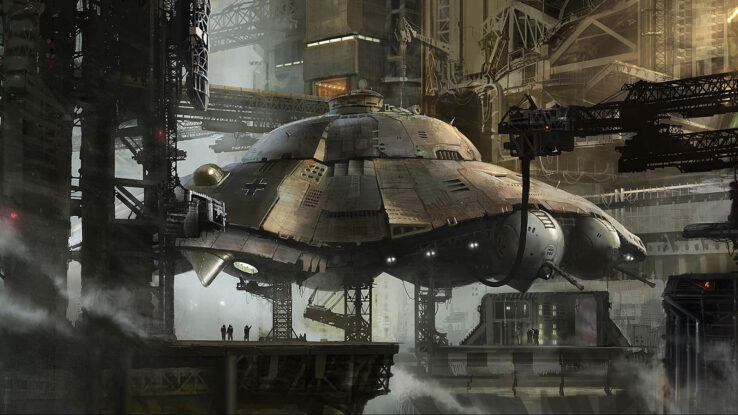

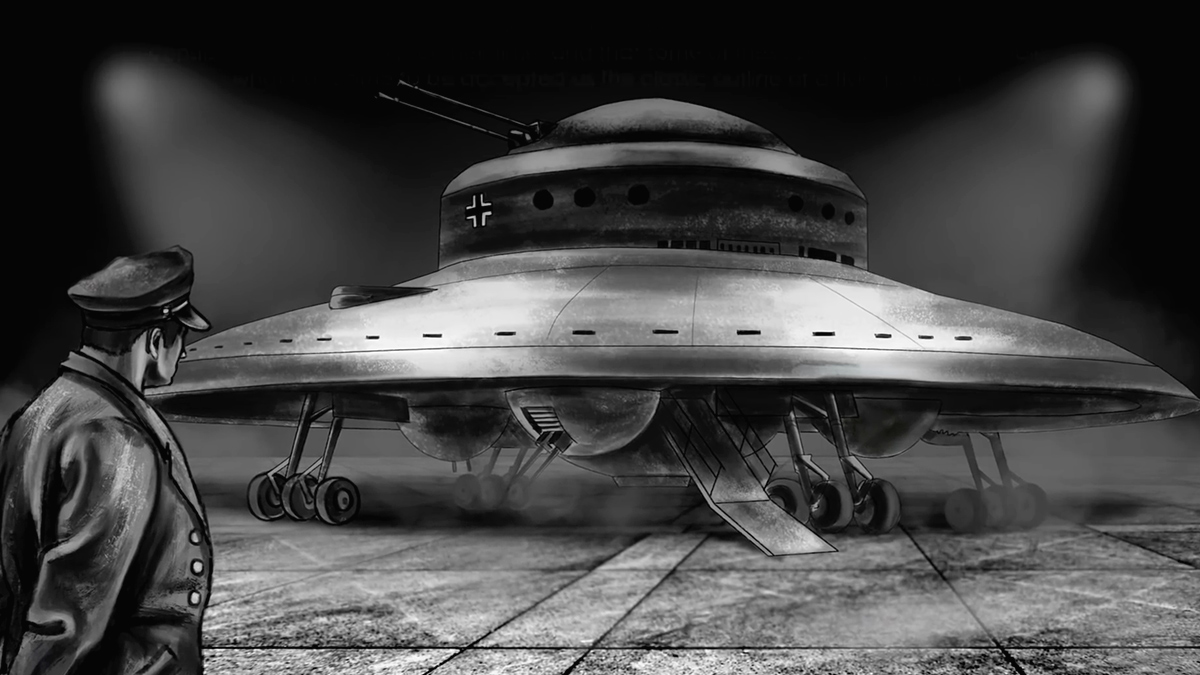
Perhaps the best-known examples in dieselpunk fiction are the flying discs of the Nazis who fled to the Moon after World War II in Iron Sky (our review here). They even boast a number of spacefaring zeppelins that carry squadrons of flying discs in their bellies. (See Flying Aircraft Carriers)
If you thought Iron Sky was ridiculous, you haven’t seen Nazis at the Center of the Earth. This 2012 direct-to-video movie regurgitates all the genre’s tropes: Nazi flying discs, Nazi supersoldiers, Nazi zombies, Nazis in Antarctica, and Hollow Earth (which, for good measure, is home to Hitler’s nightmare capital of the world). It has Hitler’s severed head in a jar controlling a robotic body and — of course — a flying saucer.

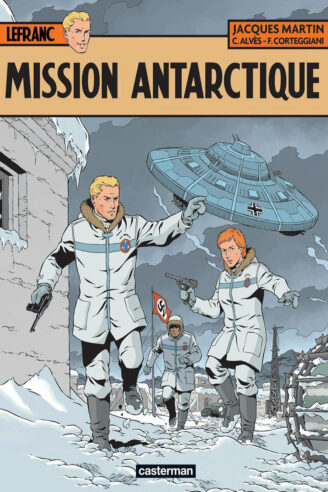

Mission Antarctique (2015), a volume in the French comic book series Lefranc, and “Evil Under the Ice,” a 2019 episode of Bedtime Stories on YouTube, take it a little easier. Both have Nazi bases in Antarctica stocked with flying saucers.
The Wolfenstein franchise can always be counted on to give an extreme version of whatever dieselpunk trope you throw at it. In the alternate future of Wolfenstein II: The New Colossus (2017), the Nazis have won World War II, conquered the Earth and started colonizing the Solar System. As a player, you can hijack a flying saucer and travel to Venus.
Revell and Squadron Models have both released miniature Nazi flying saucers you can assemble yourself.
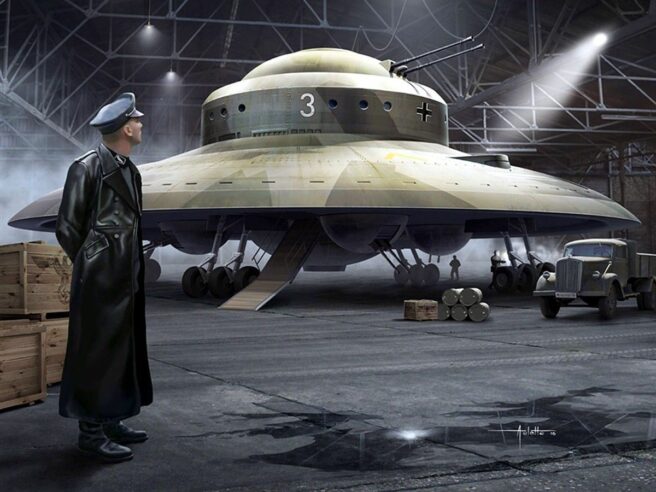


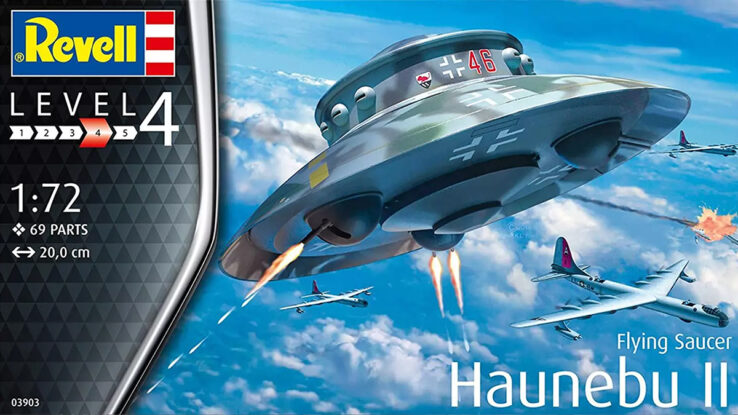
Artists Julian Faylona, James Nichols, Darren Tan and Waldemar von Kozak have created their own versions:
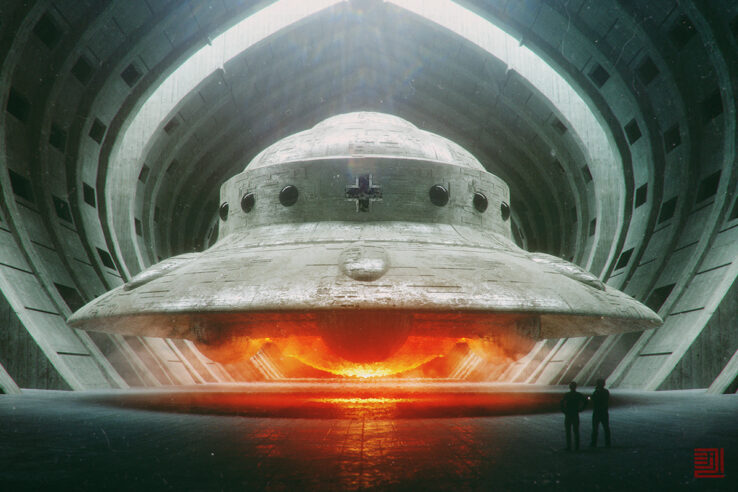
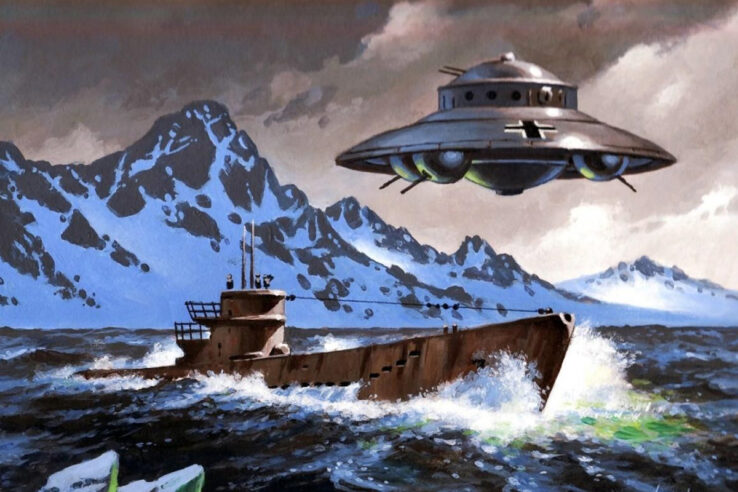

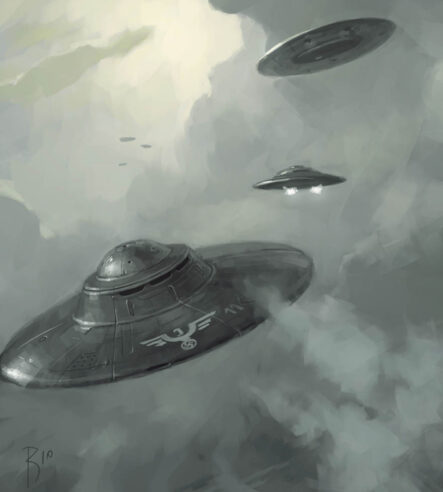

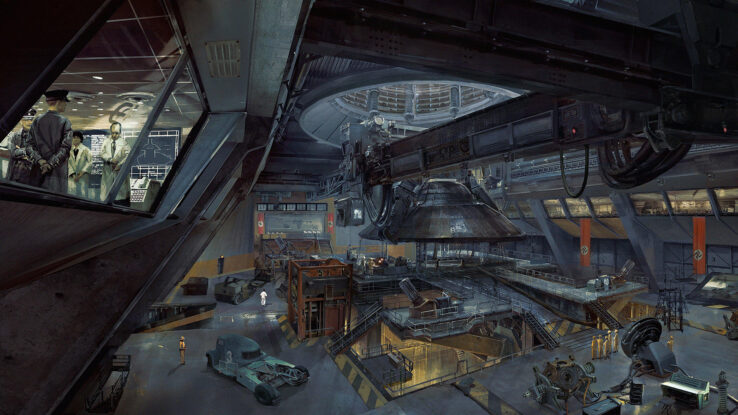

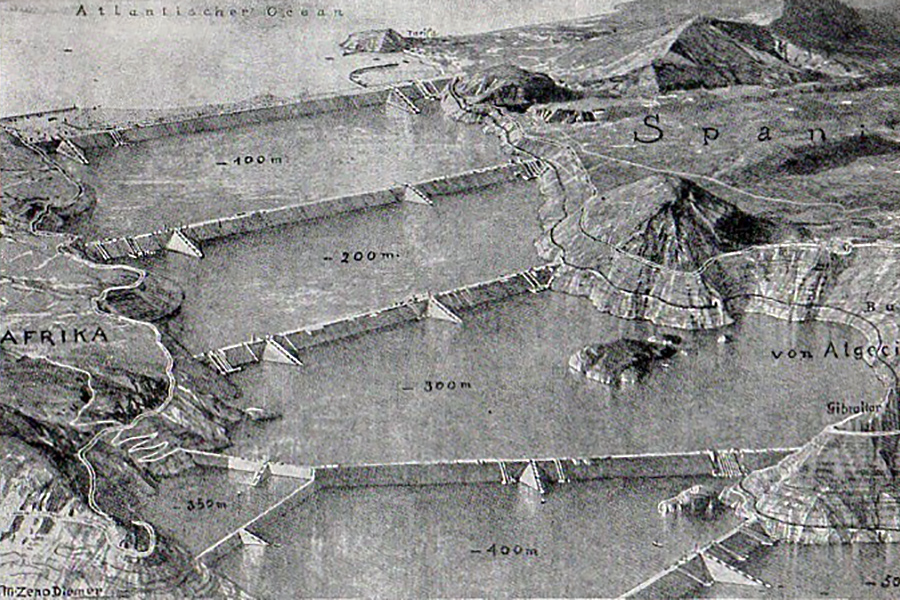
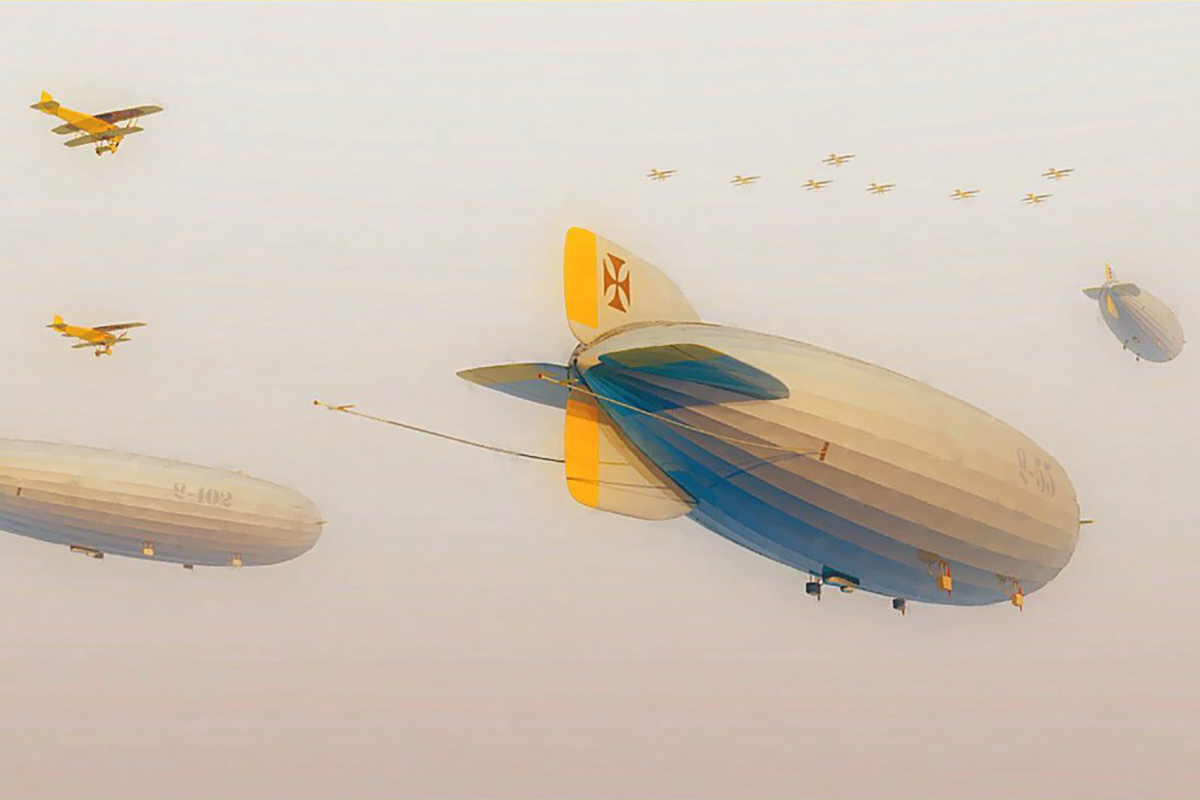

3 Comments
Add YoursThere has been quite a history of these aerodynes:
http://www.astronautix.com/l/lenticularvehicles.html
https://en.wikipedia.org/wiki/Flying_saucer
The largest saucer concept was an HLLV concept:
http://www.astronautix.com/b/bonosaucer.html
http://www.astronautix.com/graphics/b/bono631.gif
Bono, Philip, “Design Objectives for Tomorow’s Big Boosters”, Advanced in the Astronautical Sciences, 1963.
The newest:
https://en.wikipedia.org/wiki/Wingless_Electromagnetic_Air_Vehicle
https://www.cgpublishing.com/Books/lightcraft.html
https://www.bldgblog.com/2006/08/quick-list-2/
Why no mention of Richard Byrd (apt name) or Operation High Jump? Honestly.
Why, you could have clicked on the link to Nazis in Antarctica in the article.
Or typed “Richard Byrd” in the search box and found it.
Honestly.